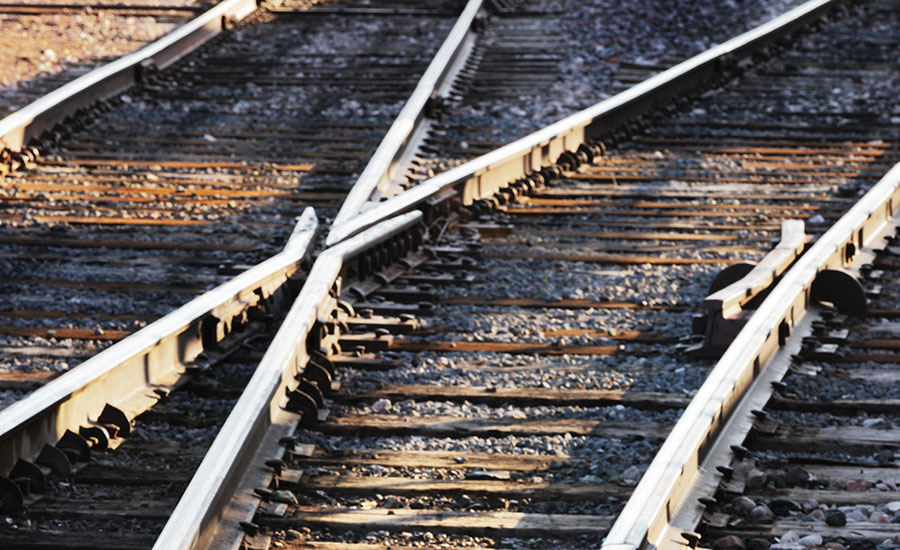The first word in the front page article in The Philadelphia Inquirer said it all: “Responding…”
Déjà vu all over again. And again and again. How many times do we need to read or hear or see a story about some safety calamity with lives lost and many more permanently injured; learn that there were safety issues or red flags preceding the incident that were ignored or postponed for another budget year; and then, but of course, shortly after the incident the sought-after safety improvements are rushed through, as though there was never any resistance.
This latest tragedy happened in May in Philadelphia, when an Amtrak train from Washington heading to New York came flying around a dangerous curve in the track minutes outside of the Philadelphia station at a speed of more than 100 MPH. The speed limit on the curve was 55 MPH, and the train was accelerating up from 70 MPH. It roared off the rails, killing eight passengers and injuring more than 200.
How many times do we need to hear someone say, as a U.S. Senator did after the crash –
after gets the emphasis: “Philadelphia was preventable, and it was predictable.” The lack of positive train control on all rail lines is “a national disgrace.”
Always after the fact
Preventable. Predictable. A disgrace. This is the job safety world’s version of would’ve, could’ve, should’ve. Apologies abound after the fact. What we get before an incident occurs are often excuses and rationalization as to why safety issues have not been proactively addressed. As in, to date, Congress has only allocated $50 million specifically for positive train control (PTC). That’s $50 million out of $2 billion-plus in expected nationwide commuter rail costs. We’re talking pocket change, something akin to OSHA’s tiny budget in the grand scheme of federal spending. Time and again, the upstream management failure to invest in safety before something goes off the rails or blows up is, well, yes, a disgrace.
Lamentable tradition
Putting off safety expenditures is unfortunately a time-honored tradition; a deplorable tradition more specifically. Also, putting off, delaying, ignoring safety calls to action has always been with us. In the Amtrak case, Congress in 2008 order all passenger railroads and major freight railroads to install positive train control by the end of 2015. These kinds of deadlines are like OSHA standards-setting deadlines – elastic to say the least. Of 41 affected railroads, only three are expected to meet the deadline.
CYA time
So now it’s CYA time. “Responding” to the crash, the Federal Railroad Administration has ordered Amtrak to control speeds on dangerous curses on the Northeast Corridor. The FAA emergency order required Amtrak to identify within five days all curves on the Boston-to-Washington corridor where there is a drop of more than 20 PMH in the speed limit from the approaching straightway. Amtrak was to submit its plan for dealing with those curves with 20 days, the FAA said.
Suddenly urgency rules -- as is often the case after job safety incidents, particularly horrific ones that kill and injure the public and receive 24/7 saturation news coverage. Here, the government goes from not particularly caring that its end of 2015 deadline will be blown off by most railroads to issuing emergency orders mandating action within days and weeks. How many times do work-related safety issues get handled with a sense of urgency before something goes wrong? Not nearly enough.
Improvements postponed
Here’s another after-the-fact safety investment that makes you shake your head. Amtrak plans to install video cameras to monitor the engineers of locomotives on its heavily traveled routes in the northeastern United States following the deadly derailment, the nation’s largest passenger rail service announced.
“Inward-facing video cameras will help improve safety and serve as a valuable investigative tool,” Amtrak Chief Executive Joe Boardman said in a statement.
Can’t argue with the CEO’s logic. So why weren’t the cockpit cameras installed years ago if they are an obvious safety improvement and valuable investigative tool?
Money, obviously.
Here are some time-tested excuses for not spending money on safety improvements: “We’re a legacy company just trying to survive.” “We’re small company just trying to survive.” “We haven’t had a bad accident in years.” “We’re cutting back across the board.” The list goes on and on…
Amtrak will install the camera in 70 locomotives that power trains on the Washington-to-Boston northeast corridor, as well as service between New York, Philadelphia and Harrisburg, Pennsylvania. Investigators have not yet concluded why the train sped up so dramatically but are looking into possibilities including equipment malfunction or human error.
The fruits of internal investigations
Yes, blame it on equipment, or on the operator. That’s standard procedure, particularly when it’s an internal investigation conducted by the company that experienced the incident. The horrible Amtrak crash – preventable and predictable – is a reminder that decisions regarding safety made at the highest levels of organizations are not scrutinized nearly as closely as they should be. But who will enforce that? And how do you enforce decision-making when the ethos in the U.S. is, “We’ll run our company as we see fit”? Plus, many safety decisions or lack thereof are acts of omission – execs didn’t spend the money because they didn’t see the risks and there was no discussion about it.
We talk a lot about transparency in the business world today. Why not make safety expenditures transparent? Employers pay taxes. Have employers annually report how much money they spend on safety. Sure there will be an uproar, and it will never happen. Too many emperors would be found without their clothes.


